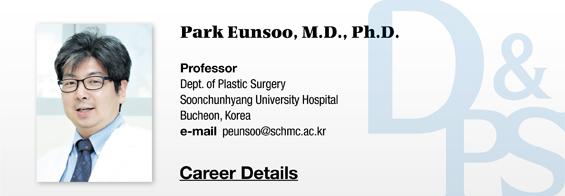Growth Factors That Influence Stem Cells
Stem cells cannot survive alone and are influenced by the environment, which play an important role in determining its fate. On the other hand, stem cells can change its environment and surrounding cells. In the fetal stage, stem cells are exposed to factors involved in development which induce fetal development through the division and differentiation of stem cells. Adult stem cells generally have low cell activity but when external environment is changed through tissue damage, etc., they start replicating themselves or differentiating.
Important components of the micro environment include the oxygen density, growth factors, cytokines, pH level, electrolyte density, and various metabolites. Micro environment components can move freely in the extracellular environment through diffusion. Moreover, as they can deliver certain signals to the cells, they can regulate various cell functions depending on their densities and types. Growth factors are the most well-known regulators of cell division and differentiation.
In an example of the growth factor action, bone morphogenetic proteins(BMPs) and transforming growth factor-β(TGFβ) family are genes expressed along the dorsal midline of a developing brain and are known to be essential for development of the central brain. Overexpression of BMP 2 and 4 impair cell division and differentiation of neurons. This can be reversed by noggin, a BMP signaling inhibitor.
Fibroblast growth factors(FGFs) are also well-known regulators. In particular, FGF 8 and 3 are expressed along the anterior neural ridge in early fetal development. Expression of FGFs increase along the developmental stages and vary across animal species. FGF activity is important in neural development and other functions. FGF 8 is important for cell survival of the forebrain. FGF 2 is important for cell division in cell culture and is also involved in maintaining precursor cells of fetal forebrain. In mice, FGFR1 and 3 receptor are known to be involved in self-renewing symmetric cell divisions.
[Advertisement] PICOCARE - Manufacturer: WONTECH(www.wtlaser.com)
Molecules other than growth factors can also be diffused. Sonic hedgehog(Shh) is a primary example. Signal transmission of Shh is carried out by a transmembrane protein, PTC1 receptor. In the absence of Shh, smoothened(Smo), a protein with a structure similar to G protein coupled receptor, is continuously inhibited. PTC1 bonded with Shh stops Smo inhibition and activates lower signal pathways to regulate transcription factors Glil-3 and Gli repressor.
In a mouse fetus, Gli 2 and 3 are actively expressed in the ventricular zone, whereas, Shh and Gli 1 are weakly expressed. Shh is involved in ventral patterning in the central nervous system and proliferation of precursor cells. In mice with Shh deficiency, microcephaly and cyclopia can occur. This phenotype is suspected to arise from anomaly in neural stem cell division.
Retinoic acid, another important morphogen, is known to play an important role in development of the central nervous system. Retinoic acid is synthesized in cytoplasm by retinaldehyde dehydrogenases. In cytoplasm, retinoic acid exists bound to cellular-RA- binding protein. Retinoic acid is known to bond with RAR1-3 and RXR1-3, retinoic acid receptors existing in the nucleus to carry out its activity. Retinoic acid plays a very important role in creating a micro environment conducive to nerve development. Therefore, profound knowledge on the components of micro environment and their regulatory functions is crucial for ensuring success of stem cell therapy.
References
1. Takahashi K, Yamanaka S. Induction of pluripotent stem cells from mouse embryonic and adult fibroblast cultures by defined factors. Cell 2006;126:663-676.
2. Wilmut I, Schnieke AE, McWhir J, Kind AJ, Campbell KH. Viable offspring derived from fetal and adult mammalian cells. Nature 1997;385:810-813.
3. Taranger CK, Noer A, Sorensen AL, Hakelien AM, Boquest AC, Collas P. Induction of dedifferentiation, genomewide transcriptional programming, and epigenetic reprogramming by
extracts of carcinoma and embryonic stem cells. Mol Biol Cell 2005;16:5719-5735.
4. Cowan CA, Atienza J, Melton DA, Eggan K. Nuclear reprogramming of somatic cells after fusion with human embryonic stem cells. Science 2005;309:1369-1373.
5. Jaenisch R, Young R. Stem cells, the molecular circuitry of pluripo-tency and nuclear reprogramming. Cell 2008;132:567-582
-To be continued














.jpg)






